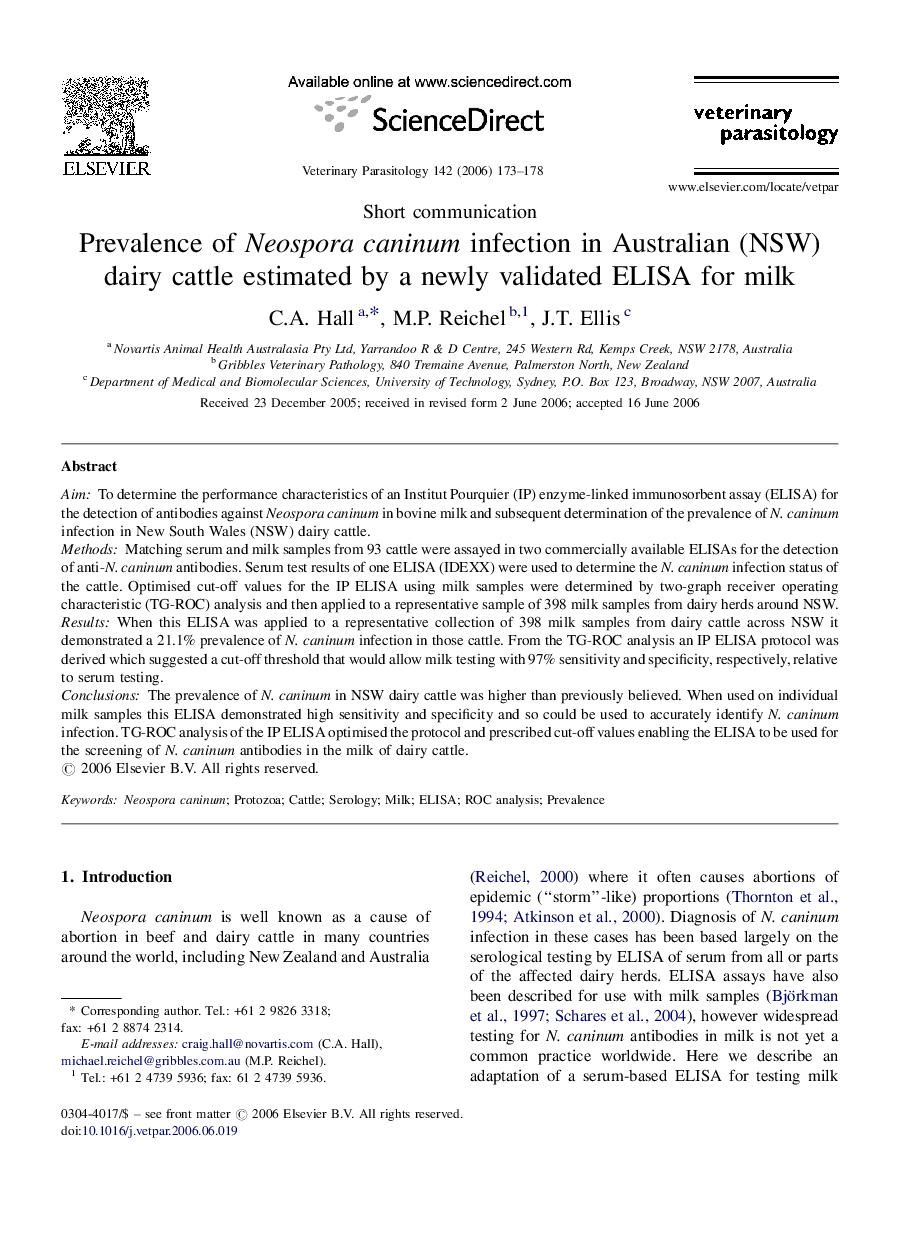| Article ID | Journal | Published Year | Pages | File Type |
|---|---|---|---|---|
| 2472297 | Veterinary Parasitology | 2006 | 6 Pages |
AimTo determine the performance characteristics of an Institut Pourquier (IP) enzyme-linked immunosorbent assay (ELISA) for the detection of antibodies against Neospora caninum in bovine milk and subsequent determination of the prevalence of N. caninum infection in New South Wales (NSW) dairy cattle.MethodsMatching serum and milk samples from 93 cattle were assayed in two commercially available ELISAs for the detection of anti-N. caninum antibodies. Serum test results of one ELISA (IDEXX) were used to determine the N. caninum infection status of the cattle. Optimised cut-off values for the IP ELISA using milk samples were determined by two-graph receiver operating characteristic (TG-ROC) analysis and then applied to a representative sample of 398 milk samples from dairy herds around NSW.ResultsWhen this ELISA was applied to a representative collection of 398 milk samples from dairy cattle across NSW it demonstrated a 21.1% prevalence of N. caninum infection in those cattle. From the TG-ROC analysis an IP ELISA protocol was derived which suggested a cut-off threshold that would allow milk testing with 97% sensitivity and specificity, respectively, relative to serum testing.ConclusionsThe prevalence of N. caninum in NSW dairy cattle was higher than previously believed. When used on individual milk samples this ELISA demonstrated high sensitivity and specificity and so could be used to accurately identify N. caninum infection. TG-ROC analysis of the IP ELISA optimised the protocol and prescribed cut-off values enabling the ELISA to be used for the screening of N. caninum antibodies in the milk of dairy cattle.
